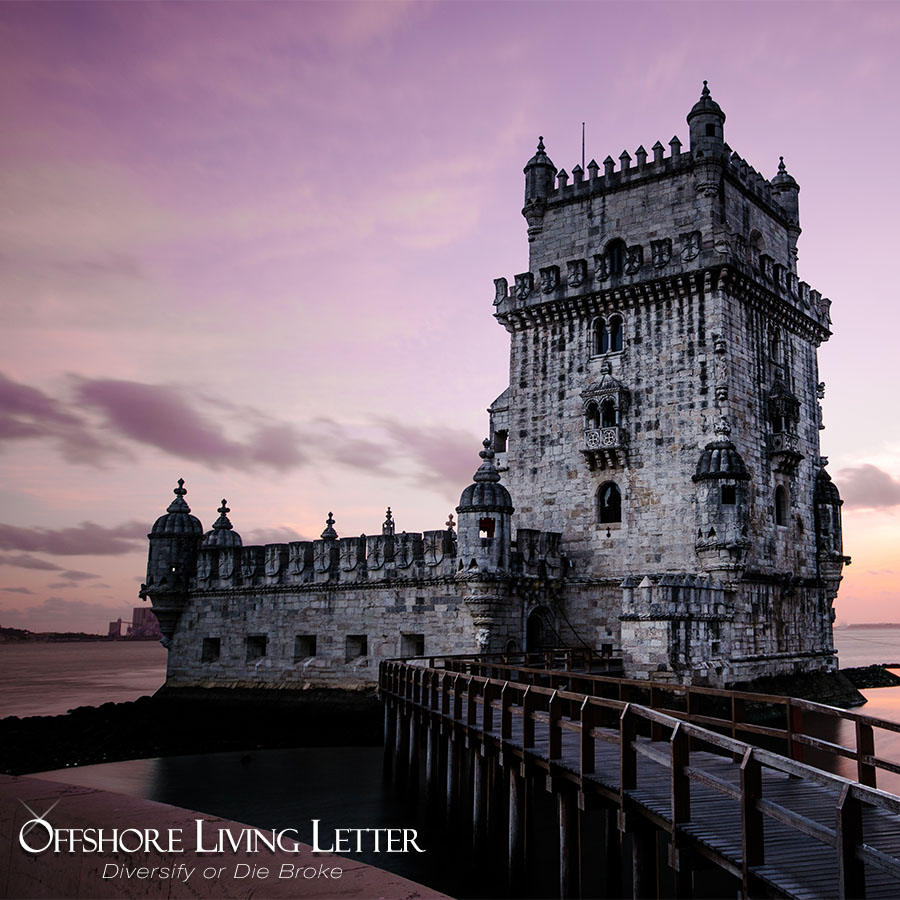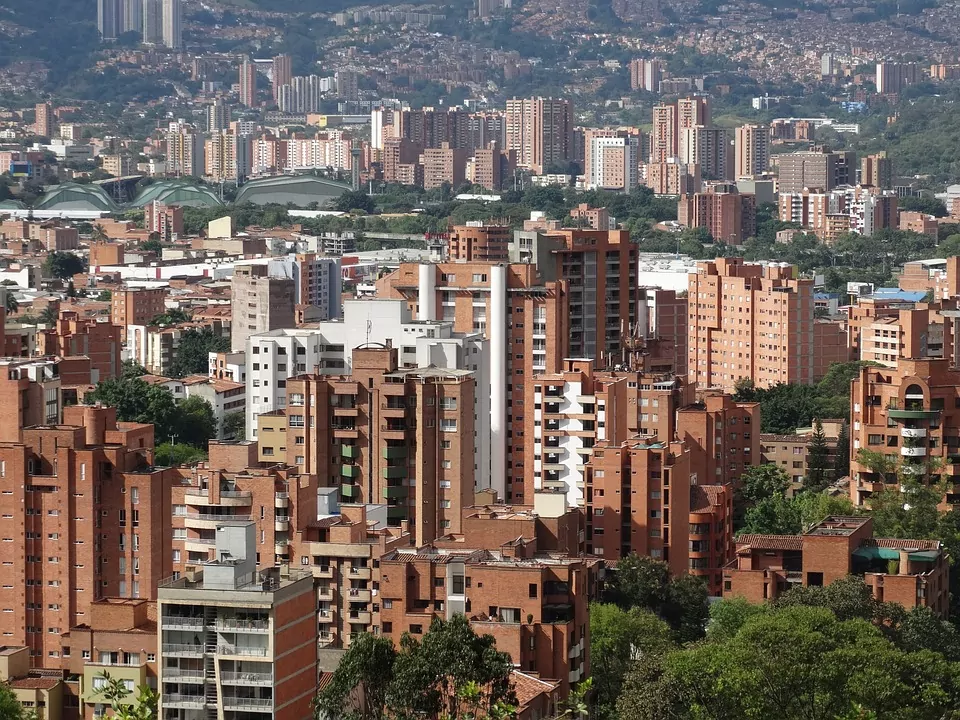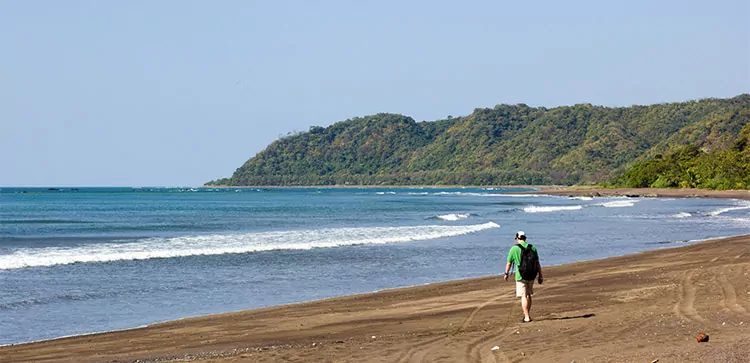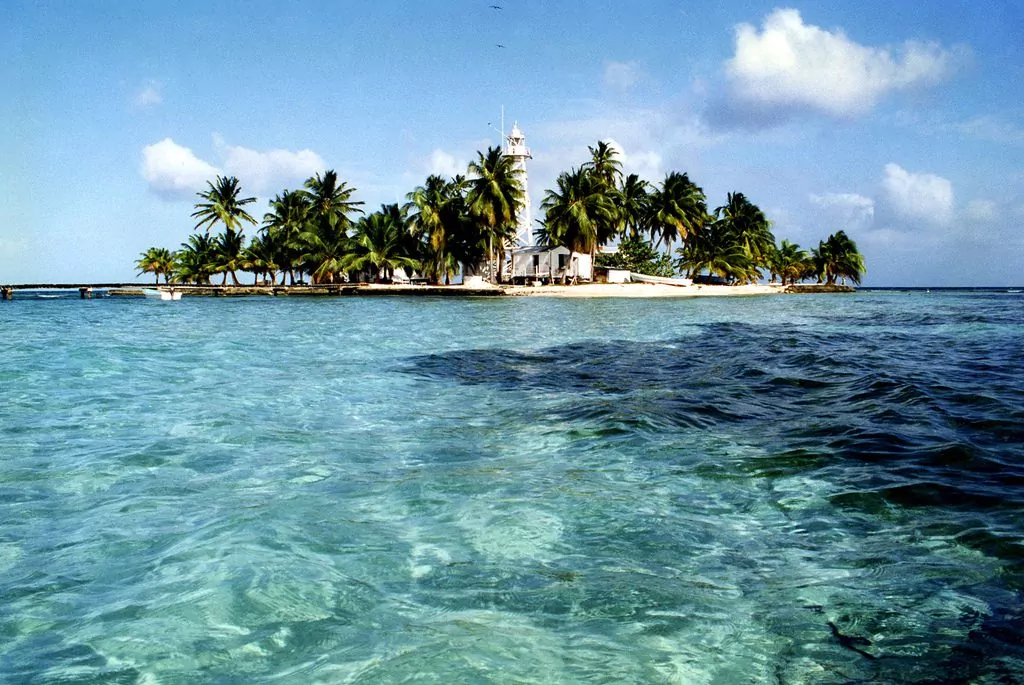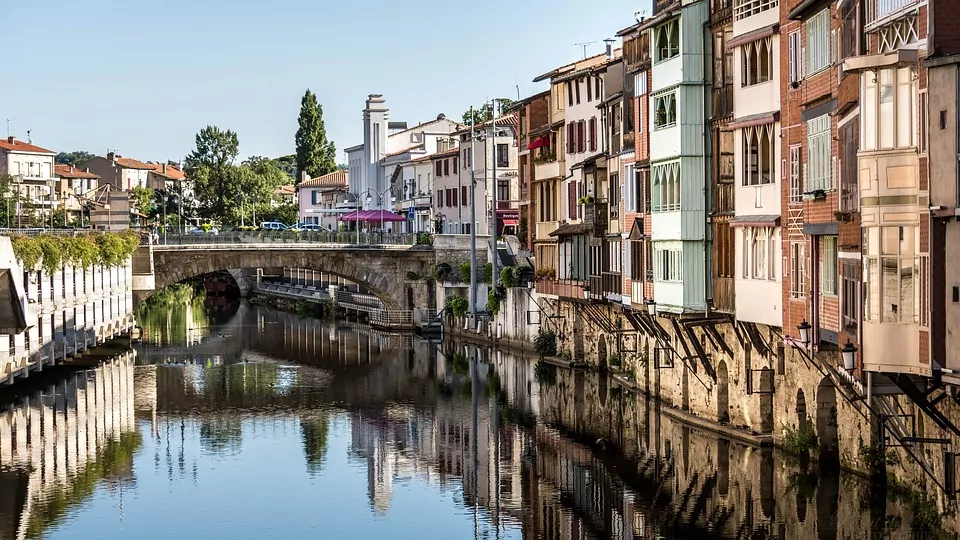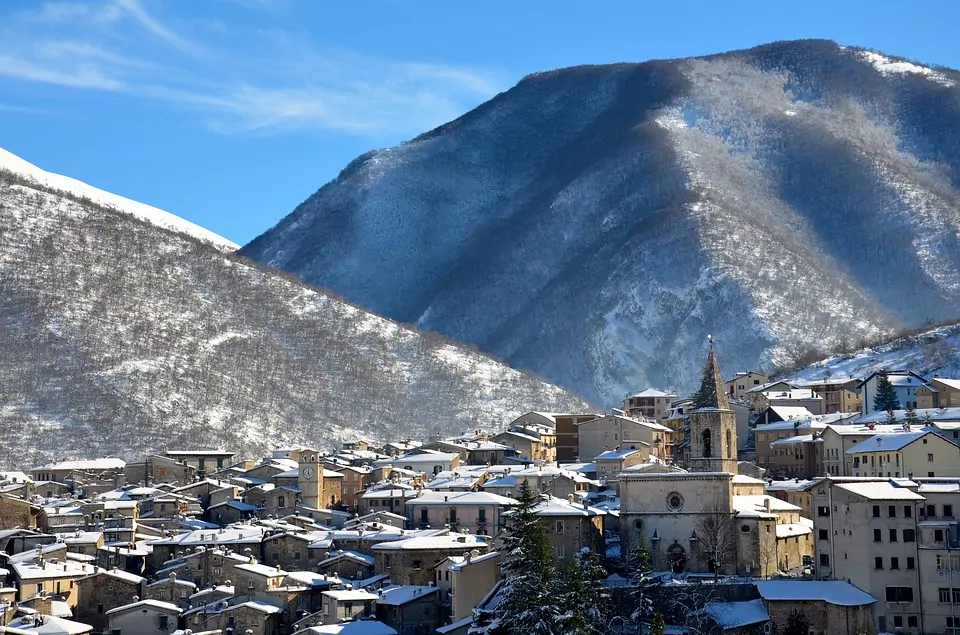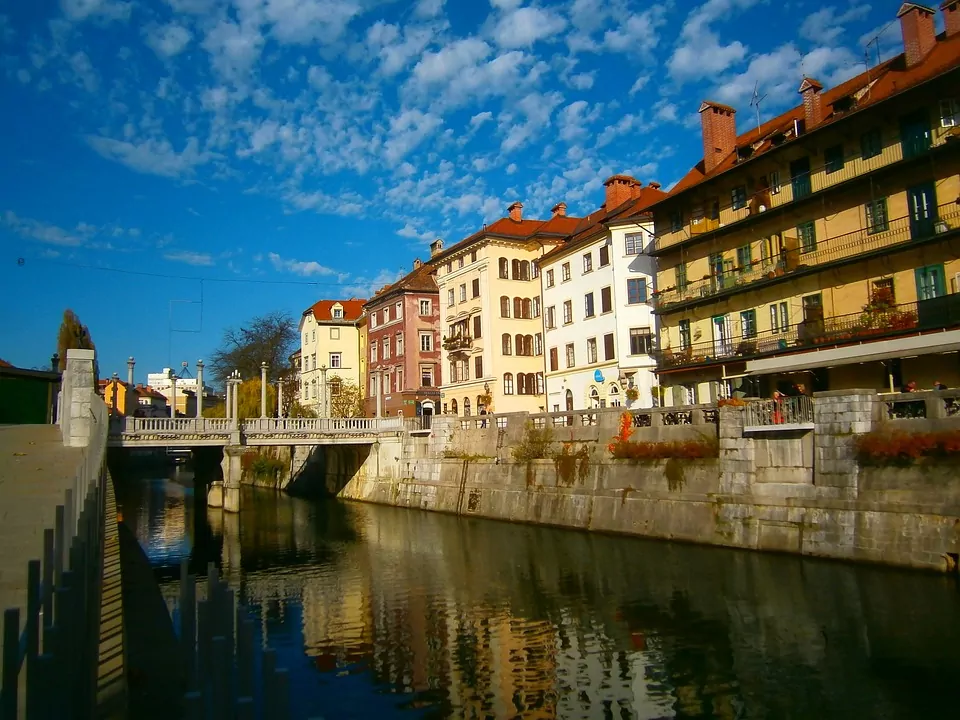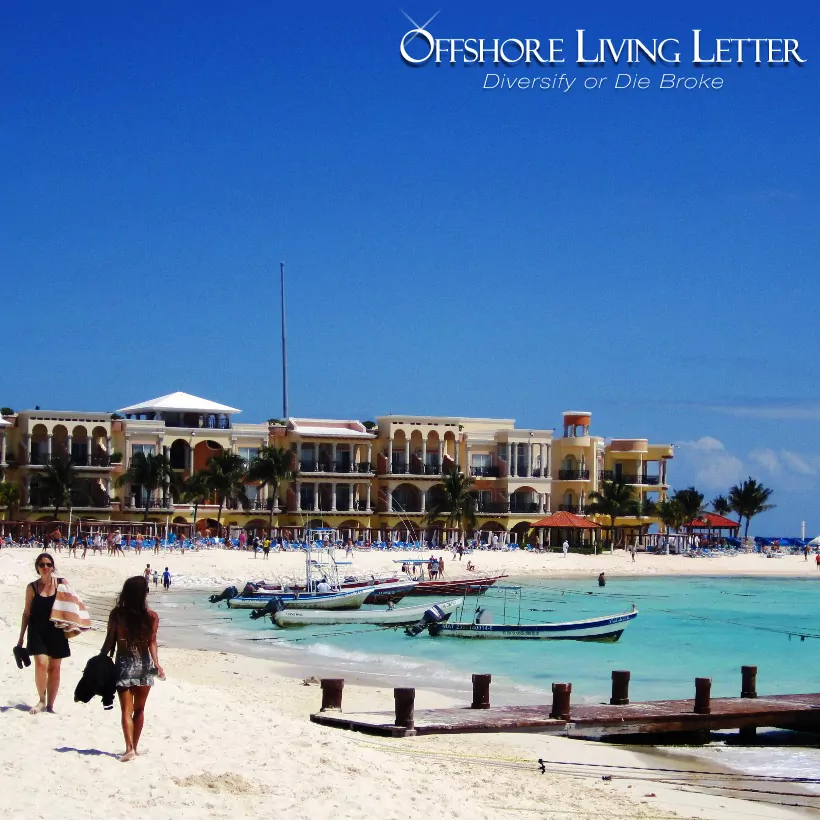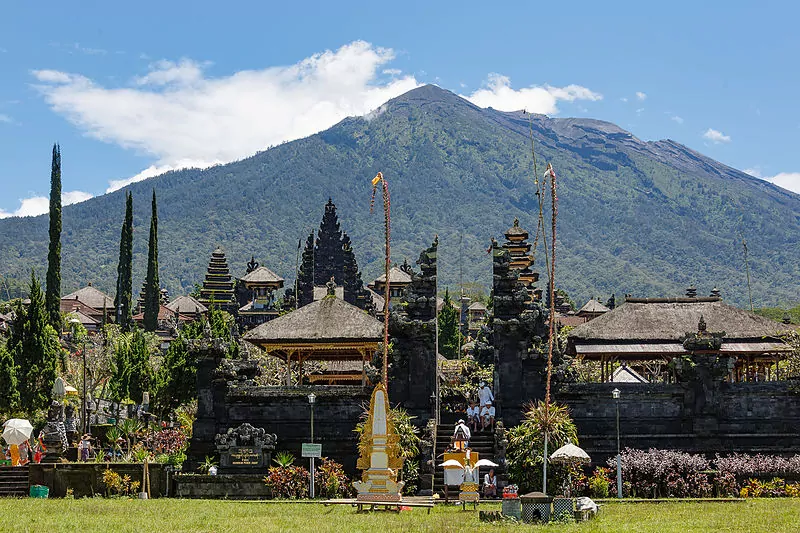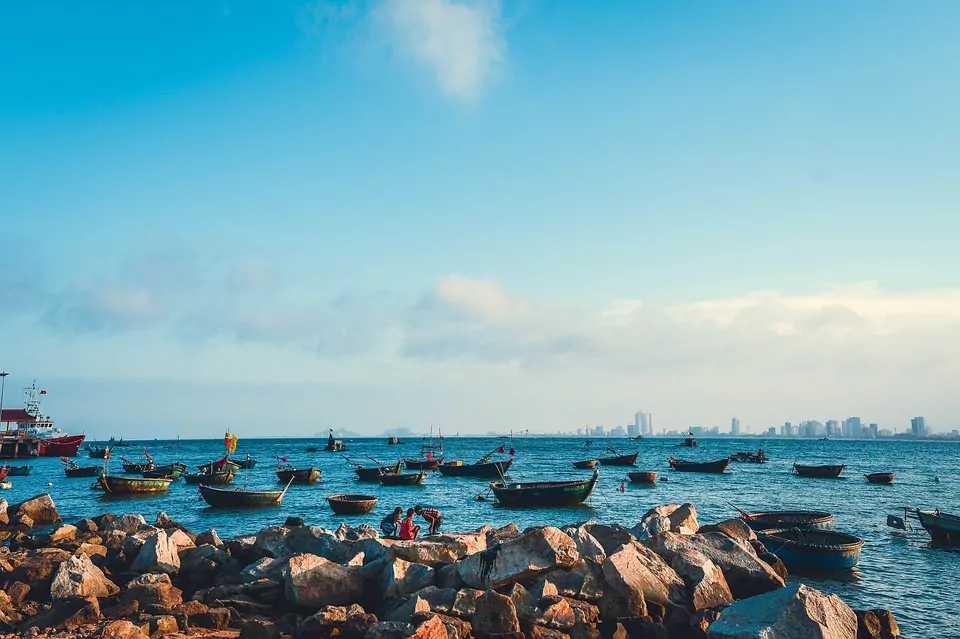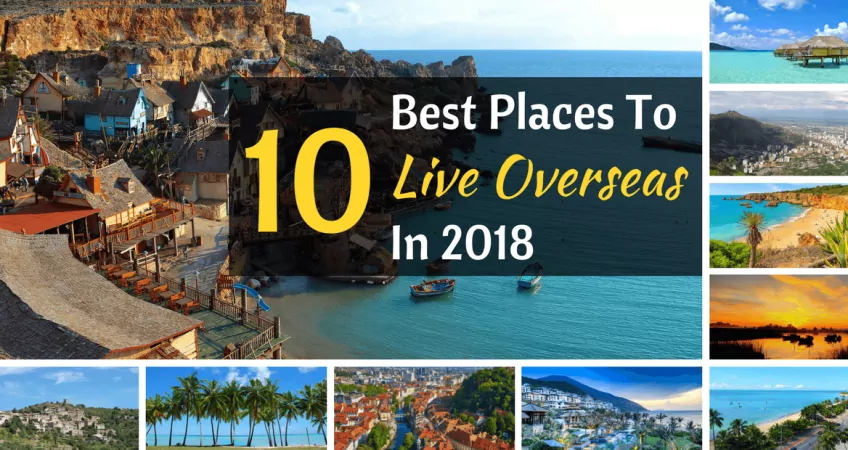
The 10 Best Places To Live Overseas In 2018
Last week, Lief shared his recommendations for the best places in the world right now for going offshore.
That’s Lief’s beat.
His wife, Kathleen Peddicord, publisher of the Live and Invest Overseas group, takes a different perspective.
Kathleen is focused on identifying the best places in the world for living well and having a grand adventure.
Where does Kathleen recommend you think about living, retiring, or otherwise spending time overseas in 2018?
Read on…
#1: Lisbon, Portugal
This city on the Tagus, one of the oldest in Western Europe, was originally settled as a Phoenician trading post. It was in the 15th and 16th centuries, though, that Lisbon flourished. Awe-inspiring landmarks were constructed during this Golden Age of Discovery—the Jerónimos Monastery and the Tower of Belém, for example, and, on the waterfront, the Praça do Comércio.
I remember stepping through the triumphal arch onto this immense plaza my first visit to Lisbon. The enormity of the space and the height and grandeur of the structures on three sides around you almost take your breath away when you face them for the first time.
Imagine what it must have been like to be here, standing on this waterfront spot, 500 years ago. Imagine the activity… the trade… the money…
From this spot, 500 years ago, Lisbon carried its culture to the four corners of the globe, colonizing Asia, South America, Africa, and the Atlantic islands…
And then it carried back from these far-flung territories great wealth, much of which was invested in the betterment of what became one of the most glorious cities of its age.
Lisbon became Lisbon thanks to its strategic geographic position at the mouth of the Tagus River. According to a popular fado, Lisbon has always been in love with her river… because the river is the city’s lifeline to the sea… and Portugal very much identifies herself with the sea.
Lisbon is a noble and elegant city whose centuries-old, pastel-colored stone structures are bordered by jacaranda trees and set off by formal gardens and parks with elaborate fountains. Roads, walkways, and pavements are laid with small cobblestones in contrasting colors to create elaborate patterns and sea scenes that are like works of art, almost mosaics.
In other words, this is a very pleasant place to be and our top pick for city living in the Old World in 2018.
#2: Cali, Colombia
Cali, in the Valle del Cauca, south of Medellín, Colombia’s third largest city, with around 2.5 million inhabitants, is not the city you imagine.
First, it’s safe.
Second, it’s a bargain… largely because for so long the world has been too afraid to spend time or money here. This is beginning to change, as tourists and investors are realizing that Cali is not what they’ve been led to believe it is.
Ignore the cautions and the historically negative press and come discover this pretty city where rents and much else can be 25% to 30% cheaper than in now much better known Medellín.
Cali is located near the equator but at an altitude of almost 3,300 feet, so its climate is agreeable and changes little throughout the year. Afternoons can be hot, but with the approach of sunset a refreshing breeze sweeps through the city. Early mornings are crisp and perfect for being outdoors.
In Cali, urban development is not at the expense of natural beauty. Even in the heart of the city, you can fall asleep to the gentle chirping of tiny frogs and awake each morning to birdsong.
Towering palms run down the middle of wide boulevards. Shade trees drape themselves over the narrower streets. Everywhere, you encounter parks, paths, and green spaces, especially on the south side.
Cali’s charms extend to its people. Most Caleños are polite and friendly. They’ll bid you good morning or good afternoon when you pass, and they’re always up for conversation. Spending time here, you’re reminded how nice life can be when it’s built on these kinds of basic values.
This city is also the acknowledged world capital of salsa. If you can swing dance, salsa is easy enough to pick up, should you feel the urge. Just loosen up your hips and move.
#3: Santo Domingo, Dominican Republic
I’ve been hanging out in New World cities that Spain built for a long time.
Over the past 35 years, I’ve gotten to know old towns from Granada and León, Nicaragua, and Cuenca, Ecuador, to Old San Juan, Puerto Rico, Antigua, Guatemala, and Casco Viejo, Panama…
Established in 1496, Santo Domingo in the Dominican Republic predates them all.
It’s the oldest European city in the Americas and the capital of Spain’s first colony in this part of the world.
Founded by Christopher Columbus’ brother Bartholomew, colonial Santo Domingo might best be described as dignified. It feels more genteel than the cities built in other of Spain’s colonies in the decades to follow.
The structures at the heart of this old town are classic Spanish colonial but simpler, statelier, and somehow more refined than their counterparts across the region.
Calle Las Damas, the first street of the original city and therefore the oldest street in all the Americas, is lined with 16th-century pale stone facades and runs into Plaza de España, the expansive open square at the harbor.
The highlight here is the colonial city’s first palace, the private home of the first governor of the colony, Diego Columbus, Christopher’s son. It’s an exceptional example of classic Spanish-colonial architecture.
Diego’s vice-regal residence marks one edge of the Plaza de España, at the water. At the square’s other edge, alongside the old town, is a row of restaurants where you can dine al fresco and watch modern-day activity in this harbor that helped build the Americas.
In colonial Santo Domingo, Bartholomew and Diego created an administrative hub for the activities their sponsoring country imagined for the New World they envisioned. It was from this base that the Spanish managed their conquests of Mexico, Puerto Rico, Cuba, Guatemala, Peru, Florida, Colombia, and Jamaica.
In colonial Santo Domingo, the Columbuses built a customs house, a hospital, a cathedral, a university, a library… everything required to launch a new Spain.
During its golden age, this city’s colonial structures stood as testament to the riches flowing through their benefactors’ coffers.
Today, Santo Domingo, capital of the country with one of the fastest-growing economies in Latin America, is chasing a new prosperity. The streets are lively, the harbor busy, and the city is the epicenter for tourism investment in this country. Recently opened are a JW Marriott and an Embassy Suites by Hilton. Under way are an Intercontinental and a Hard Rock Hotel, and Carnival is bringing a ship a day to Santo Domingo’s cruise dock.
All of this tourist growth is translating into impressive infrastructure improvements in and around the capital, as well as the continual development of new and better services, amenities, and conveniences. As a result, Santo Domingo is the most impressive Spanish-colonial city in the Americas now supported by all modern conveniences (everything from a new 911 service to new shopping malls, movie theaters, and five-star restaurants), making it a better place to think about spending time all the time.
Plus, the Dominican Republic offers the easiest and quickest residency and naturalization programs available anywhere. The country is rolling out the welcome mat for anyone interested in living here full-time… or even becoming a full-fledged Dominican.
#4: San Pedro, Ambergris Caye, Belize
My first visit to the little village of San Pedro on the island of Ambergris Caye, Belize, I climbed down the stairs of the eight-seater airplane, grabbed my duffel from nearby on the runway where it’d been placed by the pilot who doubled as landing crew and baggage handler, and carried it with me across the dirt road to the hotel where I had a reservation.
There I was met by the real estate agent who had promised to show me around. He wore shorts, a T-shirt, and no shoes.
“Welcome to barefooted paradise,” he greeted me.
I was 23 years old.
Ambergris Caye, likewise, was but a young girl. San Pedro town, the fishing village around which development was just beginning, consisted of three parallel roads, all unpaved. The hotel where I stayed that first visit and the several that followed over the next few years, the best on the island, could generously have been described as two-star. Amenities included towels in the bathroom (some days), a telephone at the front desk (that worked sometimes), and a front-line position on the Caribbean Sea.
It was the beachfront situation, of course, that people, including myself, came for. There’s only so much Caribbean seafront, and, as they say, nobody’s making any more of it.
Thus, what there is tends to be pricey. I came, therefore, all those years ago, to Ambergris Caye in search of affordable Caribbean seafront.
And I found it. My first several visits, that same real estate agent (who never did invest in footwear) toured me up and down the coast of the island in his small boat. We had to go by boat, as the single road that continued up the island beyond San Pedro town didn’t continue very far. The only way to see what the island had to offer beyond San Pedro was on foot (tough going, through untouched jungle that grew in most places up to the water’s edge) or from offshore.
I was young and inexperienced, but even I could recognize pristine beauty. The beaches of Ambergris were (and are) far superior to those of mainland Belize. They compete with the best the Caribbean has to offer, and, back then, more than a quarter-century ago now, they were a steal.
They were also utterly undeveloped. If you didn’t bring it with you from the mainland, you likely were going to go without it on Ambergris Caye. I remember a couple of beachfront bars and grills and a single small shop where you could buy cold Cokes and toilet paper. If you wanted to own a stretch of the sandy Caribbean, this was a good place to shop for it cheap. If, though, you were in the market for a Caribbean beach home, you had to be the rugged, self-reliant type to make a happy go of it here.
More than three decades later, Ambergris Caye has come of age. The three original town roads are paved… and a number of others have been carved out. A central island roadway continues nearly from end to end, meaning that, now, you don’t have to travel by boat to see the length of the island. You can go by golf cart (the preferred means of transportation these days).
The hotel where I stayed years ago is still there, but, today, it shows four stars in its materials (probably deserved). These days, the coast is also dotted with five-star hotels and resorts, along with high-end condo communities, restaurants, art galleries, supermarkets, delis, wine shops, and golf cart rental agencies.
The best part is that it’s not as bad as all that might make it sound.
Ambergris Caye has grown up, yes, but she’s managed to keep much of the charm of her youth. San Pedro town hasn’t matured into a tourist haunt. Rather, this unassuming Caribbean outpost has evolved into a cozy and welcoming community. This is neither tacky Cancún nor prim, proper Bermuda. This is a small town of expats from all over the world working together to create the life they all came in search of. They’re opening businesses, indulging artistic interests, planning community events, inviting each other over for beach barbecues…
You wouldn’t describe property prices today as a steal, but they can be a bargain compared with elsewhere in the Caribbean. However, if your dream of a new life overseas is all about soft white sand, lapping azure sea, and swaying palm fronds, San Pedro, Ambergris Caye, should be at the top of your I’m-going-to-go-have-a-look list.
#5: Saint-Chinian, France
The south of France is not very big, but it is in two parts. Provence is very known and very expensive. Alongside it is the other south of France, Languedoc, not known and not expensive.
And in Occitanie (formerly) Languedoc is little Saint-Chinian, the quintessential French country village where everyday life is like something out of Disney’s “Beauty and the Beast.”
This town is notable for two things in particular…
First, its property prices, which are half those of Provence and the Côte d’Azur.
The second reason for the growing popularity of this region is its wine.
For decades, the Occitanie produced vast quantities of quaffable vin de table, but nothing very notable. However, over the last decade or so, growers have specialized and built on the AOC status (appellation d’origine contrôlée) created in 1982 and are now producing world-ranking red wines from the original Carignan, Cinsaut, and Grenache grapes, with the addition of Syrah and Mourvèdre varieties.
Indeed, wine is the village economy. Saint-Chinian is home to 1,900 inhabitants and 200 winemakers.
Sitting on a hill in Saint-Chinian (a very pleasant thing to do, by the way) you can think you are in the middle of nowhere. But, in fact, Spain is near enough that you can pop over for dinner… and Paris is just three hours away by TGV.
Thanks to the excellent train and bus service, you can live in Saint-Chinian without a car. If you find you do need a lift somewhere, ask a neighbor. The people of Saint-Chinian are very friendly and always ready to help out. Americans often think of the French as rude and aloof. In Saint-Chinian, the reality is nothing to do with the stereotype.
#6: Città Sant'Angelo, Italy
As you ski lazily down a gentle slope, a ray of sunshine hits your face, and you look down to the coastline. The sun is glittering on the Adriatic. Between you and the sea is an expanse of vineyards and olive groves that leads down from the mountains to the beaches.
The gently rolling hills are ablaze with blossoming cherry and peach trees, while lavender, daffodils, iris, and crocus are beginning to peak out after a short and temperate winter, punctuating the landscape like a colorful Renoir.
Arriving back down to the ski resort, you have a restorative espresso and meander back toward the coast.
An hour later, you’re enjoying fresh clams and white wine at a beachside café, to be followed by handmade pasta topped with today’s catch.
After a leisurely lunch, you take a walk on the beach, maybe settle in a quick nap on the sand, reveling in the warm springtime sun. Perhaps you take a quick dip, though the waters are still shaking off their winter chill.
This is life in Abruzzo, Italy.
Abruzzo, historically one of the poorest regions in the country, had fallen off the national map until just a few decade ago. Since the 1950s, however, Abruzzo has seen steady economic growth. In the 1990s, its growth surpassed that of any other region; its per-capita GDP expanded to become the highest in the country. The construction of new highways made it more easily accessible from Rome, opening the region up domestically and attracting state and private investment the likes of which Abruzzo had never seen before.
Today, the per-capita GDP well outpaces that of the rest of southern Italy (and is a healthy 84% of the national average). Today, this is the richest region in this part of Italy.
New development is taking place, especially in Pescara, where a new bridge is under construction and large-scale housing communities are underway along the seaside, and small, historic towns are working hard to attract investment to save their historically significant but nearly deserted streets.
Nowhere is this more true than in Città Sant’Angelo, our favorite spot in this welcoming region.
The Abruzzo Tourism Board is working hard to attract more tourism, both domestic and international, more foreign investment, and more general recognition. While the region is still several years away from being a recognized vacation spot, and perhaps even further from being the household name that Tuscany is, the tide is turning. I predict it won’t be too much longer until the world begins to pay Abruzzo the attention it deserves.
Meantime, right now, you could say that Abruzzo is Italy’s best-kept secret.
Abruzzo has everything Tuscany offers and more—at a fraction the cost. A couple could live here comfortably on US$1,400 per month or less, including rent… meaning your monthly budget could be much less if you own your own home.
#7: Ljubljana, Slovenia
Slovenia, the second richest of the 13 Slavic countries, is nestled among Italy, Austria, Hungary, and Croatia in the heart of Central Europe.
This is a mountainous country, with 47 kms of Mediterranean coastline and a rich aquifer system, much of it underground, that cuts through the limestone in subterranean rivers, and impressively bio-diverse, occupying an enviable position at the center of four major geographic points: the Alps, the Dinaric Alps, the Pannonian Plain, and the Mediterranean Sea.
Though this is certainly a First World country, it’s also refreshingly rural and largely forested.
Slovenia’s past is long and turbulent. This piece of earth has been shuffled among major world powers starting with the Roman Empire, then the Holy Roman Empire and the Habsburg monarchy. The country was annexed by Germany during World War II, made a socialist republic under Yugoslavia, and finally emerged an independent nation with multiparty democracy in 1991. It went on to gain EU membership in 2004.
This is a nation of resiliency and adaptability, its population hardy and determined.
Charming, Old World capital-city Ljubljana is the heart of the country, both literally and figuratively. It’s a small city of 272,000 people, but, with easy access to both beaches and ski resorts, it offers the best of all worlds in terms of lifestyle options.
Ljubljana is also a modern city with all the amenities of 21st-century living that manages to retain a small-town charm. Local farmers bring their produce to market in wooden carts each day.
An historical crossroads and key trade route, Ljubljana is home to Germanic, Slavic, and Mediterranean cultures and influences. Venice is only two-and-a-half hours away, and the country’s small coastal villages are undistinguishable from those of northern Italy.
The architecturally stunning Ljubljana boasts important Baroque, Art Nouveau, and Art Deco structures and landmarks, even though the city has been rebuilt several times over, after earthquakes.
From Ljubljana, the coast is only an hour away. Head south to enjoy the olive groves, the breathtaking ocean views, and clean, clear water of the Adriatic… or head 45 minutes north of the city to experience Lake Bled, its small island (Bled Island), the pristine mountains and forests that surround the area, and medieval Bled Castle.
What cost all this Old World charm supported by top-notch, real-world infrastructure? A couple could live comfortably in Ljubljana for less than US$1,500 a month.
Yet, despite having so much to offer, this country remains off the world’s radar. Tourists to date are mainly European, and the few expats who have found their way to this corner of Europe are British retirees.
We hope to help change that. Ljubljana deserves a whole lot more attention than she’s been getting.
#8: Playa del Carmen, Mexico
Playa del Carmen is a little beach town that sits about an hour south of Cancún on Mexico’s Riviera Maya. Once a sleepy fishing town, the port was inadvertently put on the map by Jacques Cousteau in 1954 when he filmed an underwater documentary of the Great Mayan Reef just offshore of Cozumel Island—which lies about 12 miles offshore of Playa del Carmen.
Divers began seeking out these Caribbean waters for themselves, and in the 1970s a port was built to ferry the tourists from the mainland to Cozumel. In the following years Playa del Carmen (or “Playa” to the locals) became more globally known, but only as an access point to Cozumel, the real star.
Simultaneously, 60 kms to the north, Cancún was being born. The first expats to Cancún in those early days were mainly European, but once the resort city became overly saturated by tourists, many of these first settlers started heading south to Playa del Carmen. In the 1990s the population was growing so rapidly that Playa was the fastest growing city in Mexico… and growth has continued strong in the 2000s.
These days Playa is thought to be home to over 10,000 foreigners—expats make up 7% of its total population—including many Europeans, Americans, Canadians, Argentinians, Venezuelans, and many more nationalities.
Expats aside, there is a significant amount of “domestic immigration” to Playa. Many Mexicans feel that this region of their country is one of the safest, so they come here to vacation or live with peace of mind. Plus, this coast is responsible for 30% of the country’s tourism income; the regional economy is stable and jobs are plentiful.
Foreigners can work here too, making it an attractive destination for those needing or wanting to earn an income to help support their Playa adventures. We’ve known expats in Playa who own and operate bars, teach English, teach at or run schools, and manage real estate offices.
Many are also raising families. This town is growing and has lots of niches to fill. The international school here was founded by expats who recognized that they and other expat parents needed a good option for education.
Playa’s population is incredibly eclectic for such a small town. Tourists, but also residents, are of all ethnicities and represent all parts of society. From young couples to retired couples, from families to groups of students, it seems to appeal to everyone alike. It’s also a welcoming destination for the LGBT community, with several gay bars around town.
Plus, nearly everyone in Playa seems to speak English. If you feel you may never master a second language, Playa could be a good option for you.
La Quinta Avenida (Fifth Avenue) is the pedestrianized street that runs parallel to the beach, one block up. Acting as the town’s boardwalk, this buzzing strip is the heart of the town’s entertainment. Music rolls out of the open storefronts as you walk down the street… Led Zeppelin, then Jimmy Buffett, then salsa…
Around 10 p.m., as many of the older crowd head home after a long day in the sun and a few cocktails with dinner, the rock and roll gives way to club music. Taking their place, the younger crowd starts to fill the streets, and they’re just getting started for the evening. The party here lasts well into the night, with music going strong until the early morning hours.
When it comes to day-to-day living, you’d have no trouble finding anything you’d want or need. And you can get pretty much anything you’d have gotten back home, this little town has 12 supermarkets and 2 Walmarts.
#9: Bali, Indonesia
Bali enjoys a well-deserved reputation as one of the most beautiful tropical islands in the world. The jungle is lush, with an immense variety of ferns, palms, flowering plants, and trees in a thousand shades of green. Volcanoes raise their heads above the clouds, and terraced rice fields cascade into the valleys.
Multitiered Balinese temples adorn even the smallest villages. The locals are unfailingly friendly and some of the most serene and pleasant people you are likely to find anywhere.
The coastline is a picture postcard, and the ocean, which is never far away, offers world-class diving, surfing, snorkeling, parasailing, and all other manner of water sports.
Bars, dancing, and discotheques are all convenient. Festivals and cultural events are staged almost weekly. Dining options range from excellent street food (for a pittance) to white-glove and five-star.
Golf, climb a mountain, go to the zoo, visit galleries, talk with artists, commune with monkeys, study yoga or meditation, take a cruise… there are always many interesting options for how to fill your days.
Honest and respectful curiosity will serve as your passport into Balinese culture. Sincere and interested foreigners are frequently welcomed into tiny villages, private homes, and local gatherings. Bali can be an easy place to make friends and, for all the reasons I’ve mentioned, a difficult place to leave.
On the southwest side of Bali is the small town of Sanur, an unpretentious suburb of the larger city of Denpasar. Quiet and laid-back, Sanur feels far removed from the crowds of tourists who flock to Bali for vacations and honeymoons. Even during the height of the tourist season, Sanur never seems to attract much attention…. Making it an ideal place to think about spending time in this part of the world as something other than a tourist.
Sanur can be an affordable place to live, but it’s also possible to indulge in a five-star, luxury lifestyle. Whatever your budget, you’ll find that you can live substantially better for less money in Sanur.
Consider Sanur if you like the thought of living by a pretty beach on a gorgeous, world-renowned island, enjoying easy access to fresh and organic foods, eating at great restaurants, making friends with the genuinely welcoming locals, and meeting plenty of like-minded foreigners who have become enchanted with the laid-back lifestyle this town excels in.
#10: Da Nang, Vietnam
Women ride sidesaddle on the backs of motorbikes, even when wearing pants or jeans, legs dangling over the side, chauffeured by their colleagues or family.
Some don the traditional Vietnamese ao dai, the colorful two-piece outfit with the top extending all the way to the ankles, a long slit down one side, and long white pants underneath.
Other women wear elbow-length gloves to add a bit of class while protecting from the elements. Even the poorest find ways to show their sense of good taste and elegance.
All the retro-style class and sophistication lends an aura of yesteryear. Sometimes I feel like an old movie is playing in front of me.
The roads and architecture are modern, but most of the businesses are still family run, with almost no big international brand names, fast food joints, or coffee shop chains present. You can feel the entrepreneurial spirit, energy, and enthusiasm. It’s everywhere.
There are vendors all along the streets, mostly elderly women offering fruit, vegetables, sandwiches, and snacks. Some wear the stereotypical cone-shaped Vietnamese hat and carry their wares the old-fashioned way, in baskets balanced on long poles over their shoulders.
They’re nearly all lean, almost scrawny from all that walking around, faces creased from the sun and wind.
Men linger on street corners beside their motorbikes, ready for customers needing a short, quick ride. Others work as bicycle taxi “cyclo” drivers pedaling tourists around the streets.
They live hand to mouth, as their parents and grandparents did. They have no long-term view; today is the only day.
But that perspective is changing in real time.
This is Da Nang, third-largest city in Vietnam behind capital Hanoi and business hub Ho Chi Minh City. Da Nang is big but still provincial. Were it not for the skyscrapers, bridges, malls, endless stream of motorbikes, and the whir of air conditioners, today’s Da Nang could easily be 1960s Da Nang.
Da Nang is equidistant between Hanoi and Ho Chi Minh City, the former to the north, the latter to the south, both about 800 kms away. Migrants from the countryside are streaming into Da Nang because it’s the closest big destination for those in largely impoverished central Vietnam.
Young people from neighboring rural areas come to seek out a better life in the big city and then send money home, just like in developing countries the world over. Those who have an education and some English easily find a job in retail or the tourism industry.
In recent years, Da Nang was elevated to “centrally governed status,” putting it on equal footing with Hanoi, Ho Chi Minh, and two industrial areas, Haiphong and Can Tho. Da Nang is the designated tourism jewel of Vietnam, a gorgeous destination itself with several UNESCO World Heritage sites nearby, including Hoi An to the south, the ancient capital Hue to the north, and the ruins of Hindu temples at My Son in neighboring Quang Nam province.
Da Nang is managed. It’s organized, well planned with a strategic view. I recently saw a plan entitled “Da Nang Master Planning Vision—2030 to 2050.” If that’s not forward thinking, I don’t know what is. I’ve never heard of such a long-term city-planning view anywhere in the world, never mind in a developing country.
Signs and symbols of progress everywhere.
In Southeast Asia we’re used to anarchy on the roads. In Da Nang, the powers that be are working to address driving and parking challenges.
At the end of last year, the authorities eliminated motorbike parking in the evenings along Bach Dang, the broad riverside promenade on the Han River that runs through the heart of Da Nang.
Sure enough, promptly on the evening of Jan. 1, scores of policemen were out, all along the promenade, helping motorbikes move along, explaining where they could park on side streets, giving directions, leading the way.
The two rivers that cross through Da Nang are spanned by seven bridges. Now work is under way on a tunnel under the river at the Han River Bridge. It’s not that traffic at this spot is overwhelming today. It’s that city officials are looking ahead and preparing for future traffic.
To many in the West, Vietnam conjures up images of a backward communist country, top-heavy with red tape, clogged with inefficiencies.
This stereotype couldn’t be further from the truth in today’s Vietnam. The advent of “doi moi” in the late 80s and early 90s has brought about the intended “socialist oriented market economy.” It’s the equivalent of the Soviet Union’s “perestroika“… a restructuring.
The result is an economy on fire, led by forward-thinking executives, many educated overseas, with an entrepreneurial spirit unparalleled in the region.
Developing countries in Southeast Asia are known for sluggish service in shops, restaurants, and hotels and demotivated employees. Again, this is not the case in Vietnam. Vietnam is not your typical developing Southeast Asian market.
Vietnam has everything going for it and is catching up quickly to its Association of Southeast Asian Nations (ASEAN) counterparts in terms of foreign tourist arrivals.
In 2016, Vietnam saw more than 10 million foreign tourist arrivals for the first time; that was a stunning 24% increase over numbers for 2015.
I certainly understand the appeal. This is an interesting time in the history of a country worth knowing that offers an outside-the-box sublimely affordable go-overseas option.
Where will 2018 take you?
Let’s go find out.
Kathleen Peddicord


